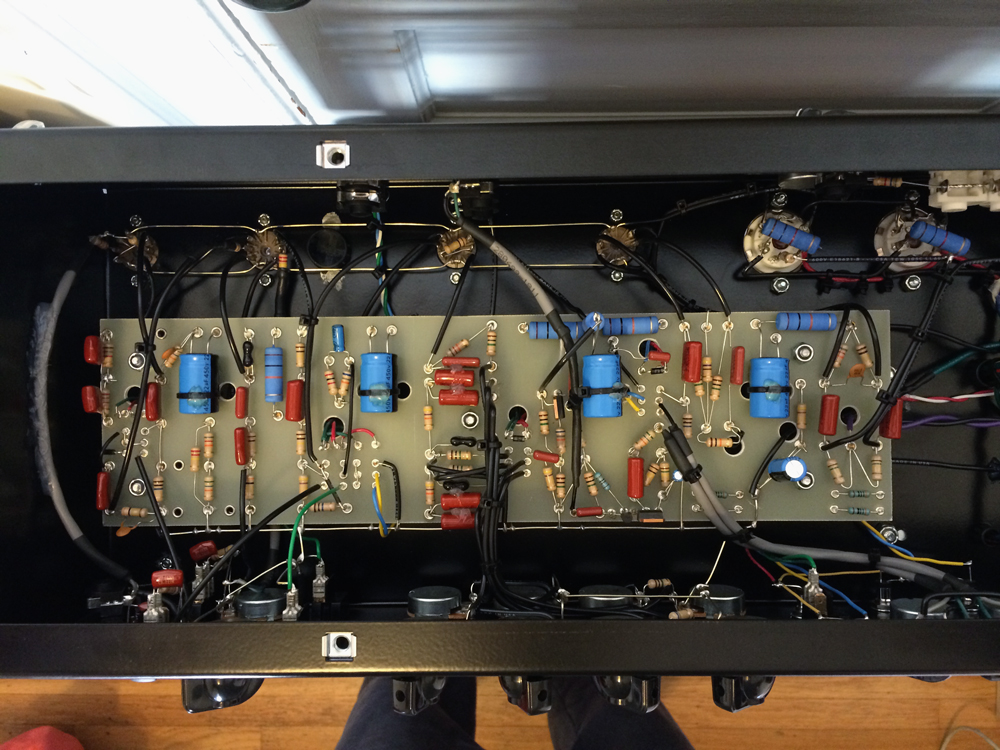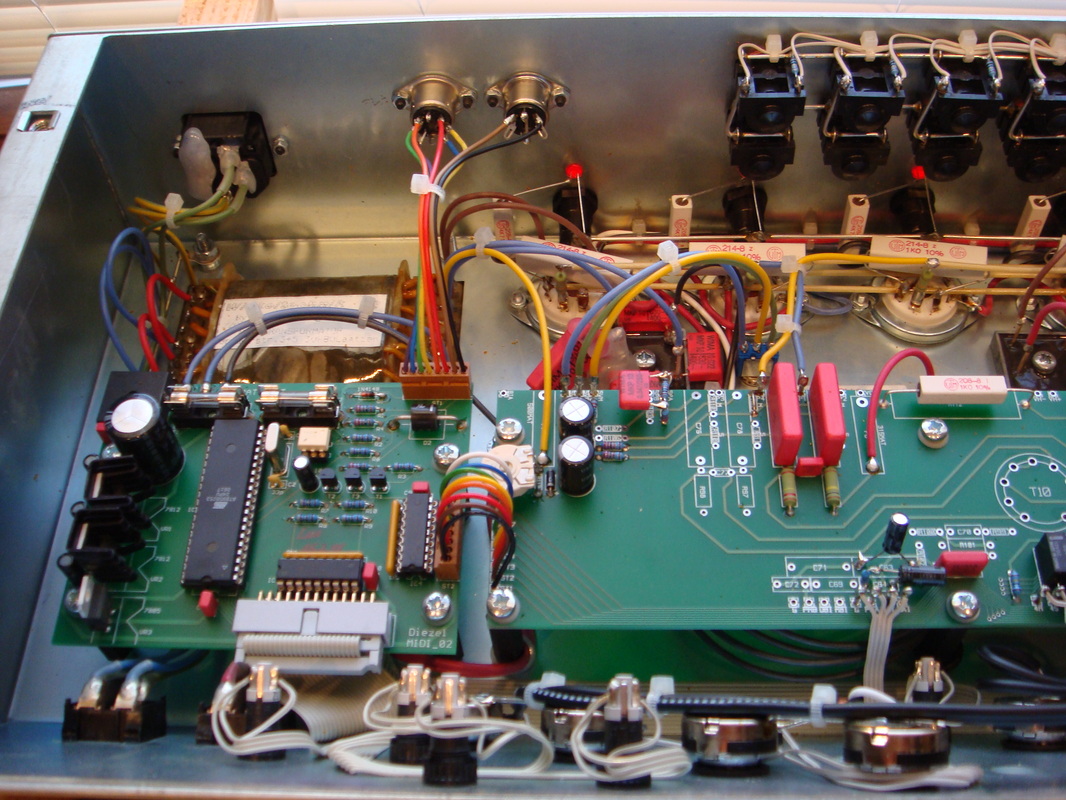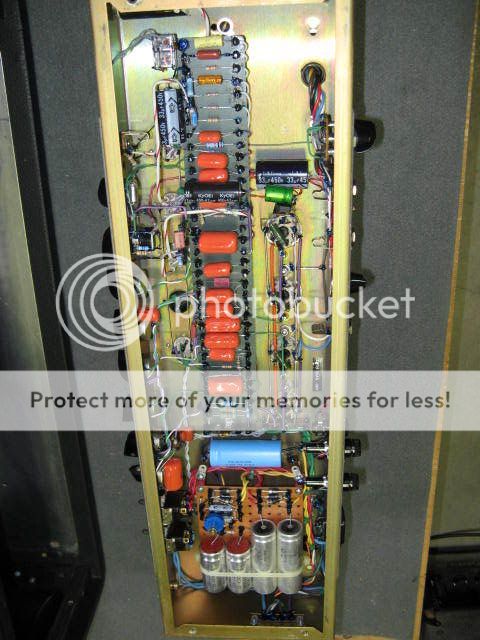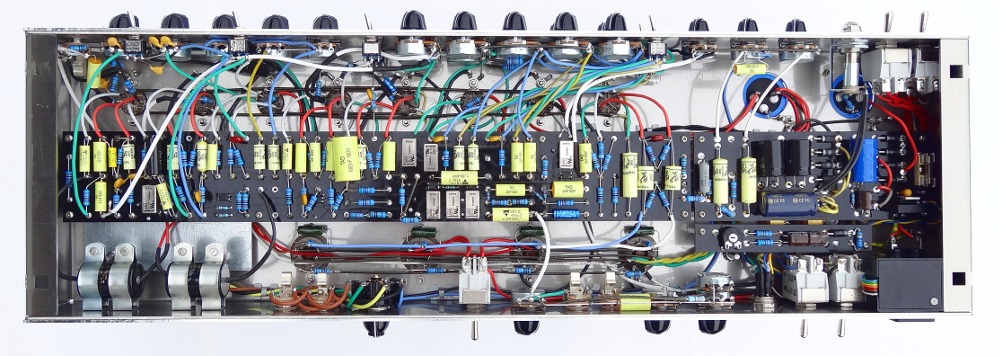I've done the heater wiring in this build differently. I used parallel bus wire instead of twisted pairs. And I elevated the heaters by referencing to the B+ line. You can see how I rigged up the voltage divider like how Valve Wizard shows it on his website. B+ is 497v. I used a 1M and 100K resistor with a 47uF smoothing cap to form the divider. Gets me about 45v for elevation. I think I got away with parallel bus wire instead of twisted pairs because all the leads from the preamp are going over the sockets and straight down.
Amp is quiet. No hums or buzzes.
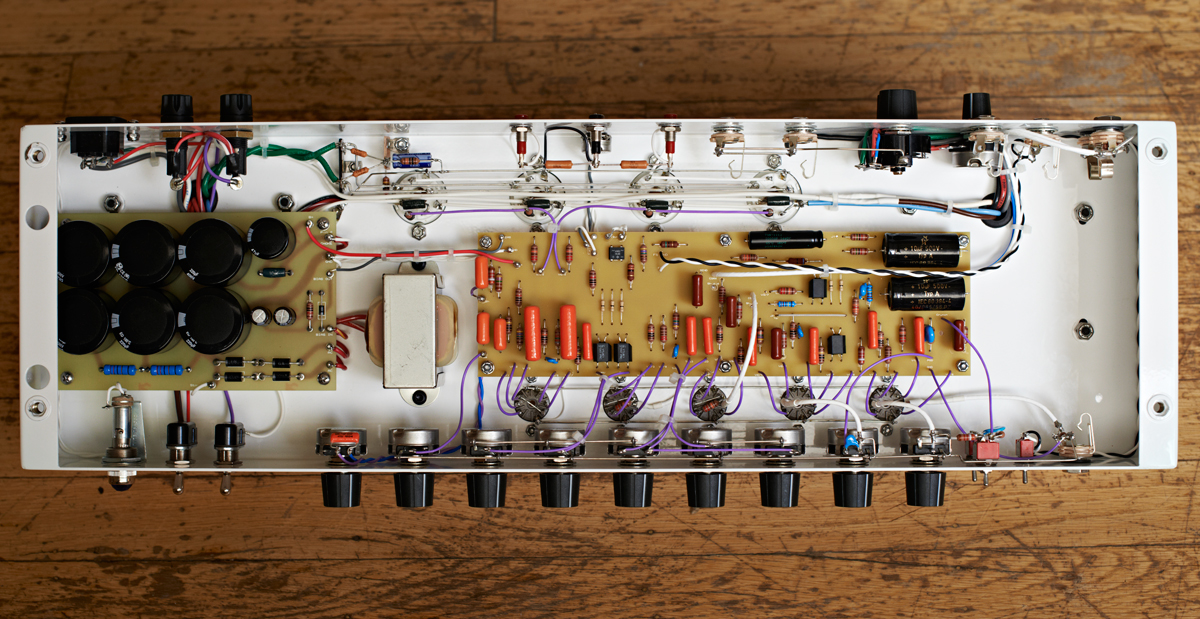
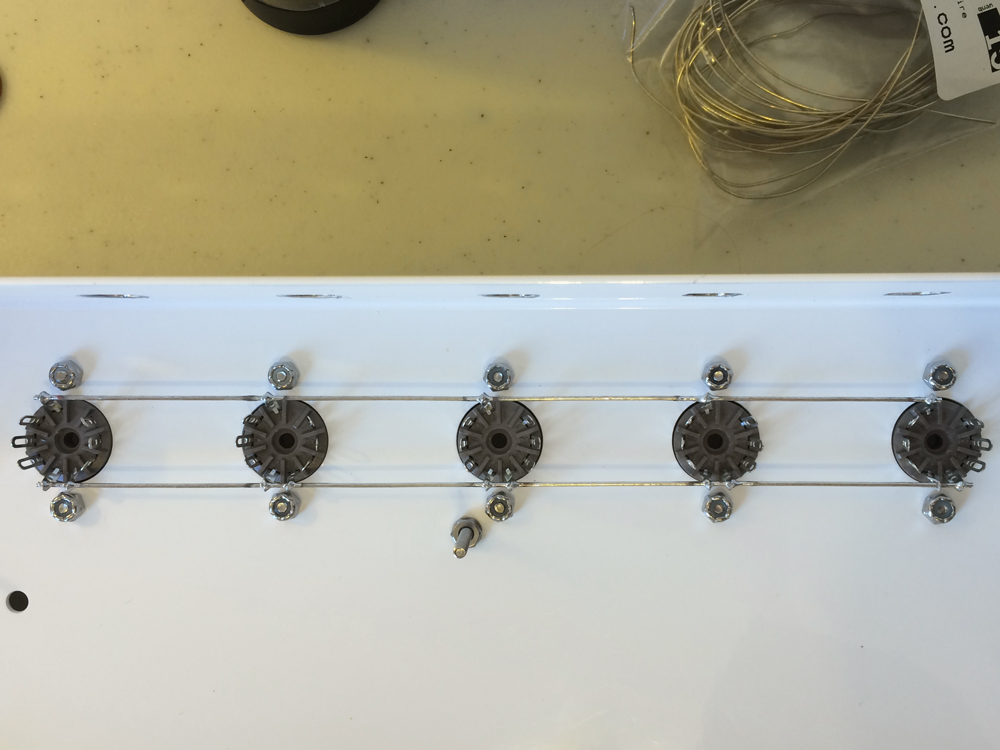
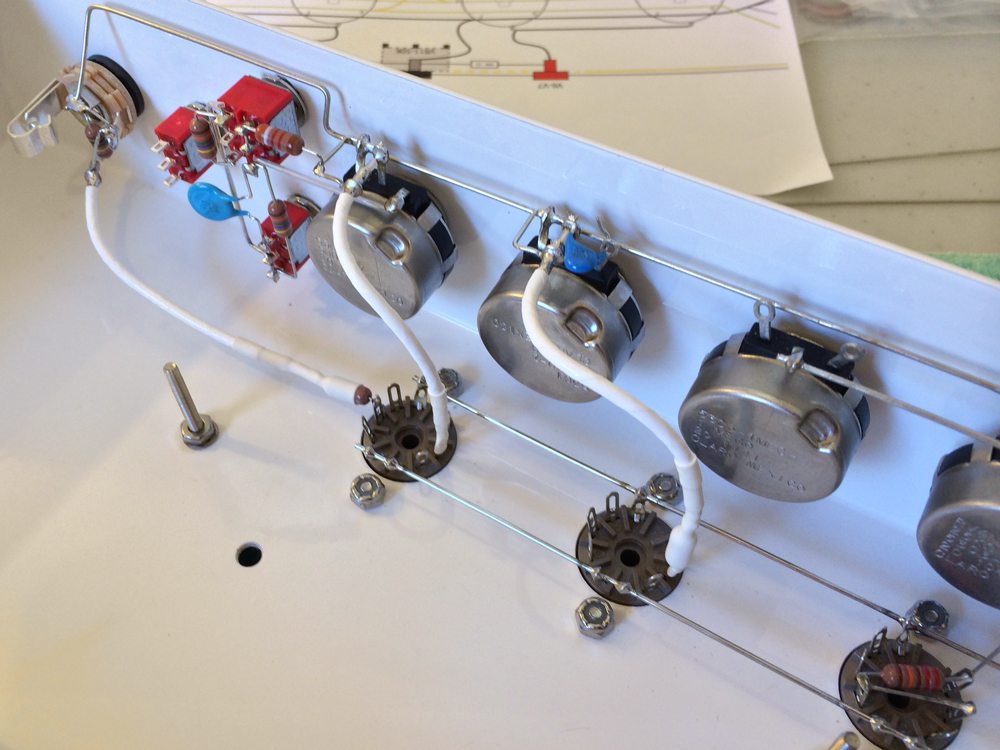
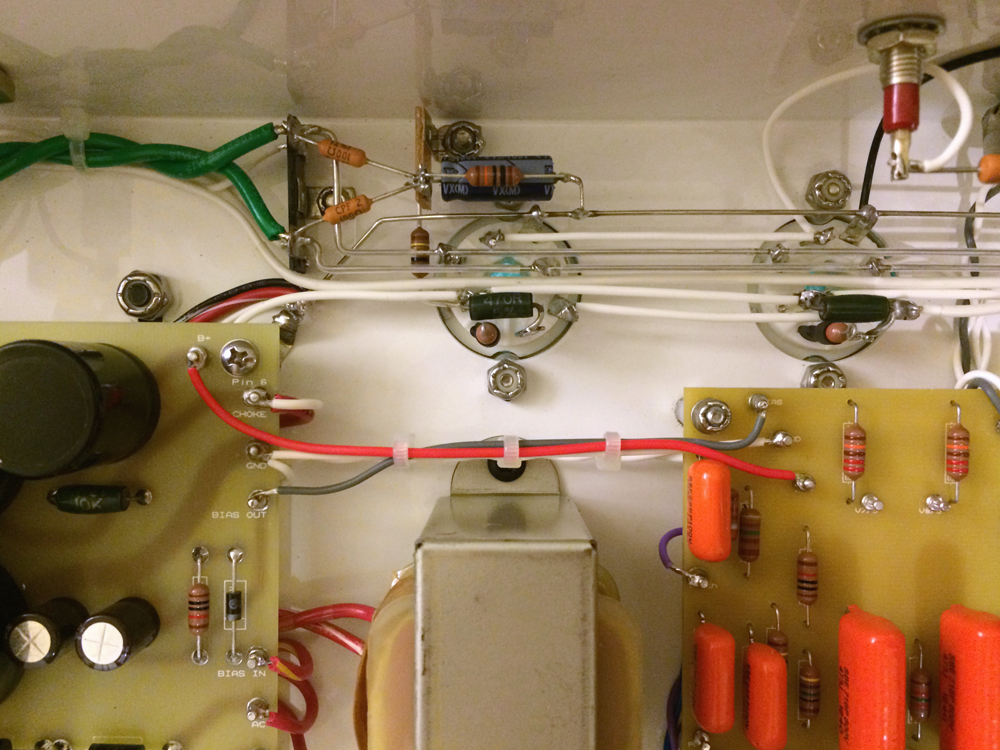
Amp is quiet. No hums or buzzes.




Last edited:
Doing the opposite of good practice and apparently getting away with it shows you are lucky. However, exactly how much hum is "no hum"? Do you mean no hum by hi-fi standards or guitar amp standards?
This is a guitar amp. And the design in question is a Soldano SLO, which has been around for about 30+ years now. Seems to work just fine
The forum covers hi-fi, other audio and guitar etc. There is a separate forum area for guitar amps, but heater wiring could refer to either type.
I was not aware that wiring AC heaters in the 'wrong' way was common in guitar amps. However, other examples of poor layout practice are common there too so perhaps I should not be surprised.
I was not aware that wiring AC heaters in the 'wrong' way was common in guitar amps. However, other examples of poor layout practice are common there too so perhaps I should not be surprised.
Parallel heater wiring isn't really a common practice in guitar amp building, SLO and Hi-Watt being the two well-known exceptions.
Well and Diezel. And Framus. And Peters. And Wizard. And Muller. And like 100 others... So yeah, I guess not that 'common' lol. Oh, and Bogner. They've been around for a while I think
I'm not saying this is the BEST way to do it. Just that it's done. And it can work too, given the right application/context. Not trying to start a fight or anything...
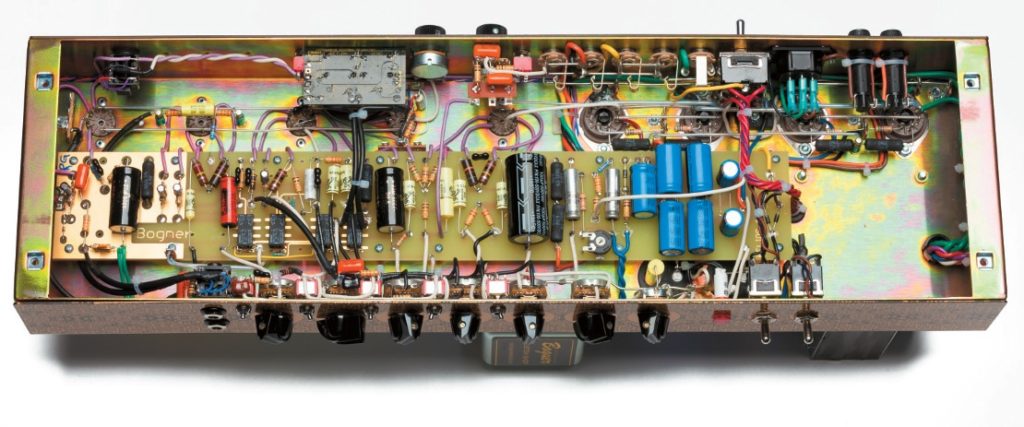
Last edited:
So why do so many designs get it wrong? Is it because musicians expect to hear a little hum so they know the amp is actually on?
No idea. But it seems to work just fine
I'll put it this way, y'all hi-fi guys look for crystal clear 100% perfect audio so you can hear all the nuances in the music tracks, recorded with guitar amps that hum!
Last edited:
Putting AC current through large loops creates AC magnetic fields in reality, whether or not in anyone's mind.
That is because the aim of hi-fi is to faithfully reproduce whatever the musicians call music, even if it includes hum or hum intermodulation. Hum in a guitar amp may be good art; hum in a hi-fi amp is bad engineering.I'll put it this way, y'all hi-fi guys look for crystal clear 100% perfect audio so you can hear all the nuances in the music tracks, recorded with guitar amps that hum!
I doubt there are 100 others... but in terms of market share, these "boutique" brands that you sited probably account for less than 5%, if that.Well and Diezel. And Framus. And Peters. And Wizard. And Muller. And like 100 others... So yeah, I guess not that 'common' lol. Oh, and Bogner. They've been around for a while I think
Seems like a mod created a new thread and moved all my posts. Cool. But I'm not really interested in a debate. I just thought it would be good info to include this stuff in that other thread about heater wiring. You can use whatever method you want. I'm not here to debate the topic. In fact, I think I'll take a leave of absence from this forum. Bye now 
Fact is that TONS of guitar amps (99% of them if measured by sales) are built on PCBs .
I don´t know of a practical method of twisting PCB tracks , even if they carry filament current, yet most do not have hum problems, at least not caused by filament wiring (internal filament to cathode hum coupling is a different issue) so the system seems to work
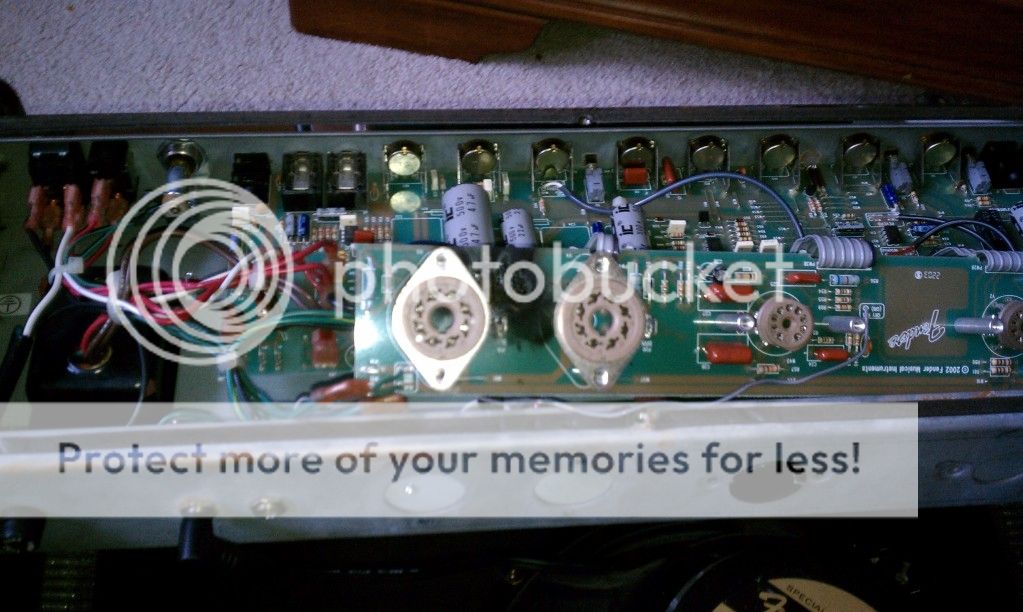
I don´t know of a practical method of twisting PCB tracks , even if they carry filament current, yet most do not have hum problems, at least not caused by filament wiring (internal filament to cathode hum coupling is a different issue) so the system seems to work

PCB tracks allow closer spacing for heater 'wiring' than deliberately using the full width of the valveholder, as some of the P2P shown above seem to do. Of course, if the rest of the circuit has no large loops to pick up the AC magnetic field then it does little harm to wire the heaters in a way which maximises the field.
In both audio and RF it is often the case that aesthetically 'tidy' wiring is poor engineering, as it can maximise loop areas and stray capacitance.
In both audio and RF it is often the case that aesthetically 'tidy' wiring is poor engineering, as it can maximise loop areas and stray capacitance.
As an electronics engineer, who used to design guitar amps during part of my career, and took a lot of care and pride in optimizing layout for minimum hum and noise, I find that remark somewhat offensive. Yes, there were amps in the past, that were a mess in many ways, as well as dangerous, but we shouldn't think they're all like that. These days no sane guitar player, having spent around $3000 or more on an amplifier is going to accept if it hums or buzzes.I was not aware that wiring AC heaters in the 'wrong' way was common in guitar amps. However, other examples of poor layout practice are common there too so perhaps I should not be surprised.
There's always a pilot light or LED for thatSo why do so many designs get it wrong? Is it because musicians expect to hear a little hum so they know the amp is actually on?
It's important to keep in mind that guitar amps have a lot more gain inside than typical hifi amps, making them much more sensitive to any hum and noise. In the case of the "boutiqe" amps just mentioned, Soldano, Diezel, Bognor, Mesa, etc, the gain levels are just ludicrous. There's absolutely no way you can get away with any hum sources, whether from heaters or anywhere else.
Here is a Hi-Watt:
What is a "Hi-watt"? I suspect that picture is of a modern-built amp, made by a company owned by a guy who the police hauled in for handling stolen vintage guitars, also well known for peddling forged "vintage" amplifier.
Here's what a real Hiwatt looks like underneath.
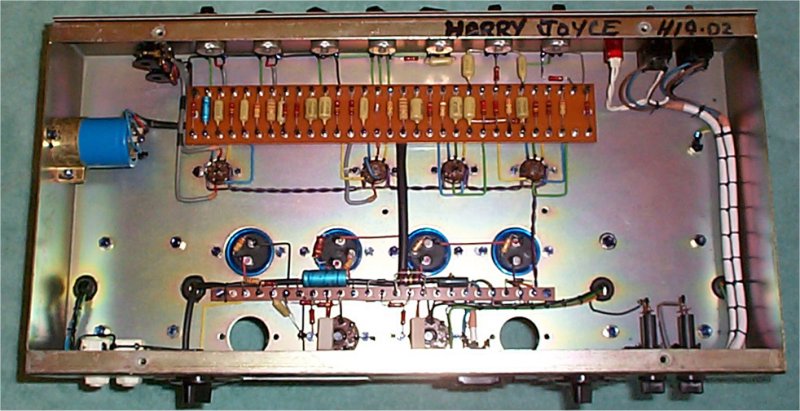
Last edited:
I said "common" not "all". Instead of being offended you should be pleased that your designs were better than that.AquaTarkus said:As an electronics engineer, who used to design guitar amps during part of my career, and took a lot of care and pride in optimizing layout for minimum hum and noise, I find that remark somewhat offensive. Yes, there were amps in the past, that were a mess in many ways, as well as dangerous, but we shouldn't think they're all like that.
Deliberately introducing large loops in an AC heater supply is poor practice; the opposite of good practice. I think "wrong" is a better summary of this than "theoretically less optimal".I also don't think you can necessarily say one way is "wrong", only theoretically less optimal.
Which is exactly why poor heater wiring should be avoided, not celebrated as the OP seemed to be doing.It's important to keep in mind that guitar amps have a lot more gain inside than typical hifi amps, making them much more sensitive to any hum and noise.
By definition, heater wiring that (a) heats up the heaters, and (b) does not introduce any audible hum or other electrical noise, is good heater wiring. Perfect heater wiring, in fact, as no audible improvement is possible.Which is exactly why poor heater wiring should be avoided, not celebrated as the OP seemed to be doing.
The OPs heater wiring, therefore, is not poor, but exactly the opposite.
To claim otherwise is to suggest that some internal mental picture that you happen to cherish trumps reality. That belief system is properly classified as religion or superstition, not as engineering or science. One of the cornerstones of the scientific method is that reality always trumps hypothesis, no matter how cherished or beloved or elegant or "ideal" that hypothesis might be.
-Gnobuddy
- Status
- This old topic is closed. If you want to reopen this topic, contact a moderator using the "Report Post" button.
- Home
- Live Sound
- Instruments and Amps
- Heater Wiring - Parallel Wires vs. Twisted Pair
